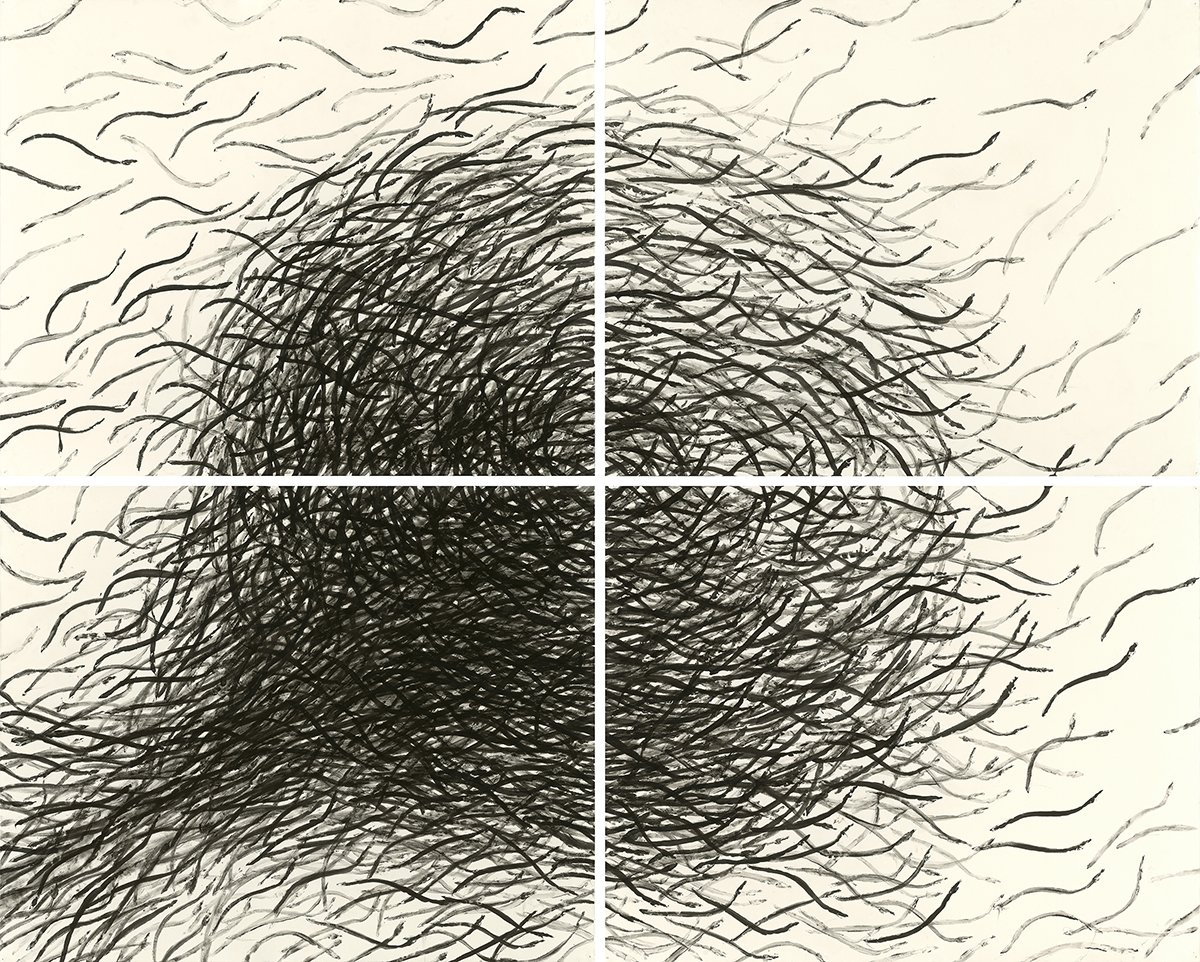James Prosek: Abstract Nature
James Prosek began his career as a painter of birds and fish, influenced by the long tradition of natural history painting. A fisherman since childhood, he spent countless hours studying the currents of the rivers in which he fished, in every season, in many parts of the world. The water became a source of fascination as deep for him as the creatures that swam within it. He was transfixed by the surface of the water, that barrier between the medium in which humans breathe and the medium in which the fishes breathe. The surface of the water, that transitional area, abstracted the world in infinite ways: for our reflected selves and for those creatures living beneath, looking up.
After years of studying and painting the things he saw in nature, Prosek began to wonder about the space between the visible objects he was painting, and the importance of those spaces to the evolution of those creatures. Instead of putting the names of the subjects, both common and scientific, below the animals and plants he painted (common practice in natural history paintings) he began drawing curvilinear lines. These lines were acknowledgements of that space between; in Prosek’s words, “those interstices that can’t be seen, quantified or solved but that are deeply important to the relationships between creatures in an ecosystem.” Those invisible spaces have become fertile creative ground for him. In recent works, he has gone beyond depicting those spaces in two dimensions (which in the past he has described as his own personal taxonomy) to making sculptural works that manifest those spaces in three dimensions (see Metamorphosis I). Looking at water has been Prosek’s way of coming to understand or at least imagine what also could be happening in air.
Abstraction in Prosek’s work is not new. In his large eel prints, which he has been making for a decade, a dead eel is slathered in ink and stamped on the paper to make intricate weaves that resemble ocean or river currents. He has said that he uses the creature that evolved in water to try to describe the currents of the water itself. For the first time in this show, Prosek has introduced two small, completely abstract works, which are imagined manifestations of those spaces in nature invisible to us, that he feels are so important. What might be interpreted as a departure from his figurative works is actually a fortification of the themes in which he has been immersed for years.
James Prosek has chosen to live and work in rural Connecticut. His studio overlooks a pond; its reflections influence his work in all the changing moods of season and weather.
Essay by Loueta Chickadaunce
Director, Mark W. Potter Gallery at The Taft School
January 4–February 1, 2013
Mark W. Potter Gallery
The Taft School, Watertown, CT
Exhibition Artwork















